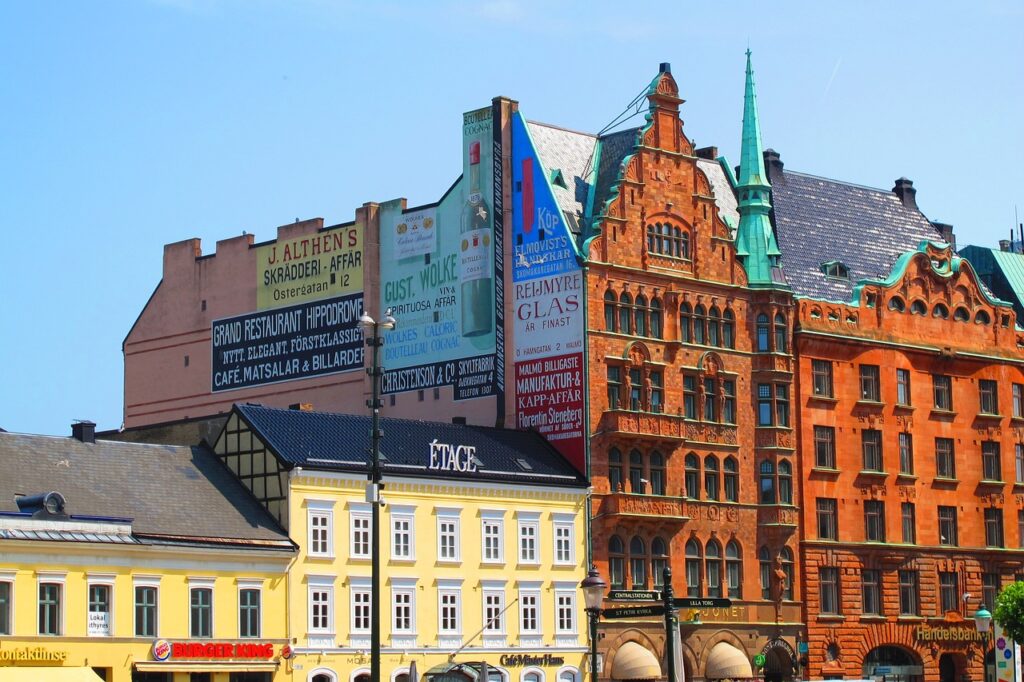8 Differences Between Swedish Culture vs American Culture
The main differences between Swedish culture vs American culture are distinctly shaped by unique traditions, historical backgrounds, and geographical settings. We will dive into various aspects of Swedish and American cultures, providing a deeper understanding of how these two countries compare and contrast each other.
In A Nutshell: “Lagom” vs “American Dream”
Sweden is known for its deep connections with community and equality. It comes from the Swedish philosophy of “Lagom,” which roughly translates to “just the right amount/balanced”. It is a way of life, a preference for moderation and collective well-being over individualism. This cultural characteristic extends to various aspects of Swedish life, including work, consumption, and social interaction, emphasizing a balanced approach towards living.
In contrast, American culture focuses more on individualism and personal freedom, ideals that are embedded in the nation’s founding documents and historical events. The “American Dream,” the iconic idea that success is attainable to anyone through hard work regardless where they come from, is the basis of many American values, such as competitiveness and ambition. This belief encourages a culture of personal achievement, sometimes may be at the expense of collective welfare.
1. Understanding the Historical Influences
The historical paths of Sweden and the US have significantly influenced their current cultural and societal norms. Sweden’s history is mostly marked by Viking heritage and a long period of imperial influence in Northern Europe. The country’s culture is therefore shaped by Viking’s community and a collective spirit, and many traditions, as well as administrative systems, were formed during Sweden’s great rule over Northern Europe.
Unlike the USA, which has a shorter history, and most of its colonial past focuses on independence and freedom. Its culture is therefore heavily influenced by the frontier spirit of its early settlers and natives. European colonization brought with it a variety of cultural practices and religious practices, particularly from England, which shaped the language, traditions, and foundations of governance. As a result, one could still find British and European heritage in North America.
2. Work Life Balance and Social Structures
Sweden is strong welfare state that supports and even encourages work life balance. For example, Sweden has parental leave for both parents, promoting a balanced approach to work and family life. The Swedish system emphasizes equality across every aspect of society, impacting its social structures, such as the stronger presence of a flat (equal) over rigid (hierarchical) system. However, this thinking doesn’t encourage societal development.
On the other hand, American culture traditionally values individualism, with more rigid social structures and a significant emphasis on achieving personal success, often measured in terms of financial status. As a result, competition is embedded in US’s society, and leads to a situation where social identities are formed, such as the elites and workers. This creates a distance between people of different social identities.
3. Respect For Privacy
Swedes can come across somewhat reserved or serious at times. New friendships often take a lot longer to develop. This demeanour can come across as distant and cold. However, for many Swedes, personal distance is maintained out of respect and consideration for other people’s feelings. An individual’s privacy is highly respected. Although this may seem contradictory to how transparent Sweden is as a society, still no one will ask you about your personal life unless you open to them. This reserved demeanour is more common in big cities than in rural areas.
Americans are typically more open, but still hold a strong expectation of personal space and privacy, depending on their background. This is seen in everyday behaviours. For example, a backyard BBQ is a common way to catch up with friends and meet new people in America, but in Sweden inviting someone to one’s home is not usual. As well as, small talk with strangers, discussing current sensitive topics, and spontaneously asking friends to hang, are more acceptable in the US.
4. Cuisine and Food
Swedish cuisine is traditionally simple, usually featuring preserved, salted, or pickled food, and very common ingredients. There is a strong emphasis on sustainability and locally sourced ingredients. This goes back to the idea of a community working together. Since winters in Sweden are long, Swedes had to come up with ways to make their food last. Also, it is because not many foods can grow in Sweden’s weather.
American cuisine, on the other hand, is incredibly diverse, reflecting its multicultural historical influence. It ranges from fast food to fusion cuisines, often characterized by larger portion sizes. The foundation of American cuisine, however, comes from the natives, who cultivated root vegetables like corn, beans, and squash, and introduced them to European settlers. Techniques like smoking and drying meat and fish were also indigenous practices that were passed on.
5. Celebrations and Holidays
Both countries have unique holiday traditions that reflect their cultural values and history. Sweden celebrates more based on nature and religion, such as Midsummer, Walpurgis night, Lucia, and Christmas. Swedes usually celebrates by being with family and friends, and having a feast, then attending locally organized activities. One word to describe Swedish holidays would be “cozy”.
The USA is more known for its celebration of historical events than religious events, such as Independence Day, Thanksgiving, and Labor Day. They highlight the country’s patriotic spirit. The celebrations are also grander and normally involves more people. This is based on a broader cultural acceptance of the “work hard, play hard” mentality, which could be one of the reasons why Americans celebrate “harder” too.
6. Geographical Influence and Sustainability
Since Sweden is full of forests and nature, environmental sustainability has become a core component of Swedish national identity. Sweden’s commitment to sustainability is evident in its urban planning and community initiatives. For example, protecting its forests by implementing the policy of planting two trees for every tree that has been cut down. Cities like Stockholm encourages the use of public transport systems, introduction of congestion tax, and incentives for EVs to reduce carbon footprints.
Meanwhile, in the US, environmental policies and practices vary significantly across different states and cities. While there are areas of strong environmental protection and innovation, particularly in states like California, the US generally shows a diverse spectrum of attitudes towards environmental issues. This spectrum often correlates with other factors, making nationwide consensus on environmental practices more complex.
7. Social Interaction and Communication Styles
Swedes typically has a communication style that is understated and at times frustrating. Since they value privacy and tend to avoid personal questions, there is much discretion in social interactions. Swedish communication also tends to be direct but non-confrontational, and there is a significant emphasis on maintaining harmony and consensus, especially in group settings. There could also be ambiguity in conversations.
Americans, by contrast, are generally more open and expressive in their communication. The American style is direct and explicit, reflecting a cultural tendency towards assertiveness. Social interactions in the US are often less formal than in Sweden, and Americans typically don’t hesitate to engage in casual conversation with strangers, demonstrating a more extroverted and open social demeanour.
8. Family Dynamics
Swedish family dynamics has a strong emphasis on equality, both at home and in the workplace. The Swedish government supports this equality through various policies, such as both parents to share child caring responsibilities and extended paid parental leave for both parents. However, it can’t be compared to the closeness of, such as, Asian families. Nevertheless, families foster an environment that encourages cooperative learning and individual development.
In the US, family dynamics can vary widely, however, most focus on being able to keep up in a competitive environment. Some parents adopt an authoritative style, which is structured yet supportive, while others may use more permissive or even uninvolved approaches. Recent trends shows a balanced parenting dynamic that promotes open communication and setting boundaries to encourage independence while maintaining guidelines.








